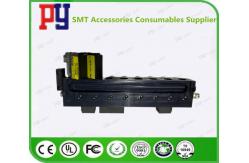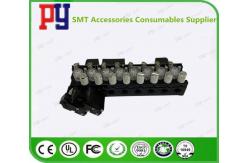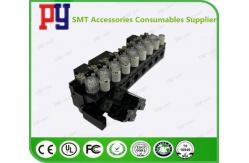Assembly Multilayer PCB HDI Immersion Gold PCB Printed Circuit Board
|
|
OEM ODM Multilayer HDI Immersion Gold PCB Printed Circuit Board
A functional test
Denser PCBs, higher bus speeds, and analog RF circuits present unprecedented testing challenges, and functional testing in this environment requires careful design, thoughtful testing methods, and appropriate tools to provide reliable test results.
When dealing with fixture suppliers, it is important to keep these issues in mind while also thinking about where the product will be manufactured, which is an area that many test engineers overlook.For example, let's say the test engineer is based in California and the product is manufactured in Thailand.The test engineer would argue that the product requires expensive automation fixtures because of the high cost of the California facility, the need to have as few testers as possible, and the need to use automation fixtures to eliminate the need for highly skilled and highly paid operators.But in Thailand, neither of these problems exist and it is cheaper to have people solve them because labor costs are low and land is cheap and large factories are not an issue.Because of this, sometimes first-class equipment may not be popular in some countries.
1. Technical level
In high density UUT, if needs calibration or diagnosis may need to be done by manual detection, this is because the needle bed contact is limited And testing faster (UUT test with a probe can be quickly collected data rather than the information feedback to the edge of the connector), to request by the operator by probing on the UUT test points.Wherever you are, make sure the test site is clearly marked.
Probe types and general operators should also be aware that some issues to consider include:
1. Is the probe larger than the test point?Is there any danger of the probe short-circuiting several test points and damaging the UUT?Is there any electrical hazard to operators?
2. Can each operator quickly locate the test point and check it?Are the test sites large enough to be easily identified?
3. How long does it take for the operator to press the probe on the test point to get an accurate reading?If the time is too long, some problems can occur in the small test area, such as the operator's hand sliding due to the test time is too long, so it is recommended to expand the test area to avoid this problem.
After considering the above issues, the test engineer should re-evaluate the type of test probe, modify the test file to better identify test point locations, or even change the requirements for operators.
2. Automatic probe
Automated probing may be required in some cases, such as when the PCB is difficult to probe manually, or when the operator's skill level slows down the test speed significantly.
Automatic probing eliminates human error, reduces the possibility of short-circuiting at several test points, and speeds up test operations.Be aware, however, that automated probing may have some limitations, depending on the vendor's design, including:
(1), size of UUT
(2), the number of synchronization probes
(3), how close are the two test points to each other?
(4), the positioning accuracy of the probe is tested
(5) Can the system detect UUT on both sides?
(6), how fast can the probe move to the next test point?
(7). What is the actual interval required by the probe system?(This is generally larger than an offline functional test system)
Automated probes usually do not touch other test points with a needles-bed fixture and are generally slower than the production line, so two steps may be required: if the probes are used for diagnostic purposes only, consider using a traditional functional test system on the production line and placing the probes on the production line as a diagnostic system;If the purpose of the detector is UUT calibration, then the only real solution is to use multiple systems, which is still much faster than manual operation.
How to integrate into the production line is also a key issue that must be studied. Is there room in the production line?Can the system be connected to the conveyor belt?Fortunately, many of the new detection systems are compatible with the SMEMA standard, so they can work in an online environment.
3. Boundary scanning
This technology should have been discussed early in the product design phase, as it requires specialized components to perform this task.In digital-dominated UUTS, devices with IEEE 1194(boundary scan) support can be purchased, which solves most diagnostic problems with little or no probing.Since boundary scanning reduces the overall functionality of the UUT because it increases the area of each compatible device (4-5 pins per chip and some circuits), the principle of choosing this technique is that the cost should lead to improved diagnostic results.It is important to remember that boundary scanning can be used to program flash memory and PLD devices on UUT, which further adds to the rationale for selecting this test method.
Pingyou Industrial Co., Ltd
|
|||||||||||||||||||||||||||||||||||||||||||||||||||||||||||||||||||||||
| Product Tags: Immersion Gold PCB Printed Circuit Board HDI PCB Printed Circuit Board OEM ODM Printed Circuit Board | |||||||||||||||||||||||||||||||||||||||||||||||||||||||||||||||||||||||
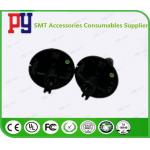
|
Original Fuji AIMEX H08M Nozzle Pick And Place AA8LY00 R19-037-155 M |
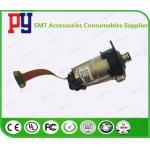
|
Genuine New Parts 03050314S04 DP Driver ASM Smt PCB Assembly Equipment |

|
Assembleon PA 2657-02 TTF 8mm Twin Tape Feeder R1.2 13inch SMT Machine Spare Parts |
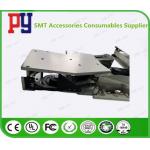
|
Assembleon PA 2655-45 ITF3 56MM R5.0 Feeder SMT Machine Spare Parts |
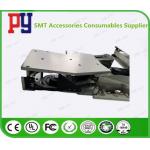
|
Assembleon PA 2655-40 ITF3 44MM R5.0 Feeder SMT Machine Spare Parts |
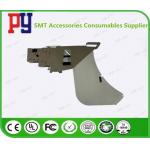
|
Assembleon PA 2655-36 IFEEDER 32MM SMT Machine Spare Parts |

